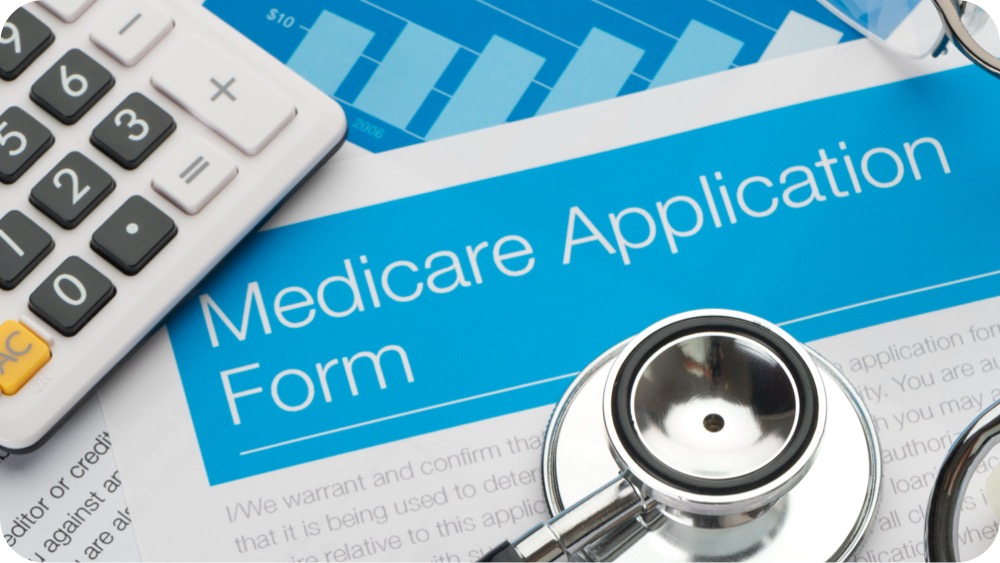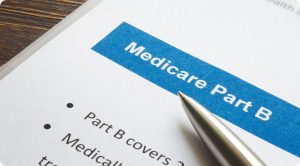
Your Medicare Guide ﹥ How to Sign Up for Medicare How to Sign Up for Medicare

Free Medicare Comparison
Enter your zip code & compare plans.

Free Medicare Comparison
Enter your zip code & compare plans.
What Do You Need To Know
Medicare is a federal healthcare program that is available to everyone 65 years and older. To enroll in the program, you must meet eligibility requirements and enroll in your period. This period changes, depending on the Medicare part you want, as well as your situation. For example, if you continue to work after 65 years and have access to healthcare benefits, you may need to enroll in Part A, but decline Part B. If you don’t, you could be subject to penalties later.
Steps to Sign up for Medicare
You can enroll in Medicare with the following steps:
Step 1- Determine Your Eligibility and If You Need to Sign Up
The first step is to determine your Medicare eligibility. This is also when you determine whether you need to sign up (some people are automatically enrolled in Medicare).
For Some, Medicare Enrollment is Automatic
Some people are automatically enrolled in Medicare. For example, you may be automatically enrolled in Medicare Parts A and B if you meet the following criteria:
- You have received Social Security benefits or Railroad Retirement benefits for a minimum of four months before you turned 65 years.
- You’re under the age of 65 years but have received Social Security or
Railroad Retirement Board disability benefits for at least 24 months.
If you already receive Social Security retirement benefits, you’re automatically enrolled in Medicare Parts A and B and your coverage begins at 65 years.
However, even if you are automatically enrolled, you may also decide to do the following:
- Sign up for a Medicare Part D prescription drug plan
- Switch to a Medicare Advantage plan
- Buy a Medicare supplemental insurance policy
This automatic enrollment will occur 24 months after the first month of receiving disability benefits. An exception to this is if you are currently living in the U.S., but not in one of the main 50 states or the District of Columbia, you will have to manually enroll in Medicare Part B, as this is not usually automatic.

Eligibility Qualifications for People Under 65
Some people under the age of 65 years will also be eligible for Medicare benefits. If you’re currently receiving Social Security Disability, and have been for a minimum of 24 months, you may also be eligible for Medicare benefits. In addition, Medicare may be available for people under 65 years if they have a permanent disability.
In addition to determining eligibility qualifications , you also need to evaluate when your open enrollment period is. If you are not automatically enrolled in Medicare, move on to step two.
Step 2- Collect Your Necessary Documents
Before enrolling in Medicare, it can be helpful to collect a few important documents. You will need information related to:
- Current health insurance information
- Medicaid benefits you’re already receiving
- Medicaid number
- Your, or your spouses, work information
You may also need additional information if you are not a U.S. citizen or over 65 years and transitioning from a work-sponsored policy to Medicare. You may also want to consider other Medicare coverage options to find what’s right for you.
This includes investigating Part D. You may also choose to enroll in Medigap, which can help with other medical costs. You may also choose to replace Original Medicare with a Medicare Advantage Plan or Part C. These plans are available through a private insurance company.
Step 3- Choose an Enrollment Method
There are a few ways in which you can enroll in Medicare Parts A or B. You can choose one of the following methods:
- Enroll online: You can get Medicare online at SocialSecurity.gov. This is the fastest method of enrollment.
- Enroll by phone: You can also enroll by phone by calling 1-800-772-1213 during normal business hours.
- Enroll in person: You can also enroll in person by visiting your local Social Security office during business hours. Most offices do require that you make an appointment.
Step 4- Enroll in Medicare Benefits
The next step will depend on which enrollment method you choose:
Online Enrollment
Online enrollment is usually the easiest and fastest method of applying for benefits. Once you create an online account and submit your application, you can check the status online. You can also use the Medicare online system to replace your Medicare card or to print a Medicare benefit verification letter when buying other parts.
Phone Enrollment
If you prefer to apply by phone, you can contact a representative at 1-800-772-1213. Depending on how many people are calling, you may have to wait before talking to a person.
In Person Enrollment
If you prefer to apply in person, you can do so by visiting your local Social Security office. You can use their website to find the location closest to you.
Upon completing your application, if you are approved, you can expect a packet within two weeks. In this packet, you will also receive a Medicare & You handbook, which helps you keep track of your health coverage and benefits.
While you don’t have to annually renew your Medicare benefits, you do have to pay attention to enrollment periods if you want to make changes. For example, if you chose to delay Part B, then you need to re-enroll later, when you need it. If you decide to change your current Medicare policy, like adding Part D, you need to enroll within the specified period.
Enrollment Periods
It is important to know the eligibility requirements so you know when to enroll in the Medicare program you want. There are a few enrollment periods to know, including:
Initial Enrollment Period
For many people, enrollment in Medicare Part A is automatic. If you are not one of these people, then you will need to enroll during the Initial Enrollment Period. This period is the seven-month period that begins up to three months before your 65 year birthday, and goes until three months after. People who may need to enroll during the IEP are those who have not yet applied and are not currently receiving retirement benefits.
Even if you are not receiving Social Security benefits because you are not eligible for them, you may still be automatically enrolled in Original Medicare.
General Enrollment Period
The general enrollment period is for people who did not enroll during their initial enrollment period. This General Enrollment Period goes from January 1- March 31 of each year. If you enroll during this period, you may be subject to a late enrollment premium.
Special Enrollment Period
Suppose you chose not to enroll in Medicare Part B during your Initial Enrollment Period because you already had health insurance. In that case, you may be able to enroll during the Special Enrollment Period without a late enrollment penalty.
This period is from eight months after your employment concludes or after your group health plan concludes, whichever occurs first.
To enroll in Part B after you no longer have work-sponsored health insurance, you must complete the CSM 40B Form application. You will also need to fill out Section A of CMS L564 Form, which is a Request for Employment Information.

Medicare Advantage Plan Eligibility Requirements
Medicare Part C, or Medicare Advantage Plan, has different eligibility requirements. This is an alternative way to receive Original Medicare benefits. Medicare Part C is purchased separately through a private insurance company and must include both Parts A and B, and may include other coverages, like dental or vision insurance.
Medicare Advantage Plans have a few eligibility periods:
- Initial Coverage Election Period: The Initial Coverage Election Period is the same time frame as your Initial Enrollment Period. This means it begins three months before you have both Medicare Part A and B and concludes on either the last day of the month before you have both or the last day of your Medicare Part B Initial Enrollment Period.
- Annual Election Period: The Annual Election Period is when you can make changes to your Medicare Advantage Plan. This period begins on October 15 and concludes on December 7 of each year.
- Medicare Advantage Open Enrollment Period: Medicare Advantage also has an Open Enrollment Period. This is from January 1- March 31 each year. You can switch Advantage plans during this time, as long as you already have one, or disenroll in your plan and go back to the Original Medicare plan.
If you miss both of these enrollment periods, you will have to wait until the Medicare Advantage Open Enrollment Period to drop or swap back to Original Medicare benefits. The Medicare Open Enrollment Period is from January 1 to March 31 each year.
Medicare Part D Enrollment Period
The Medicare Part D Annual Election Period is for you if you did not enroll in Part D during your Initial Enrollment Period.
The Initial Enrollment Period for Medicare Part D varies, depending on your service area and whether or not you have Parts A and B coverage. In most cases, your Initial Enrollment Period for Part D and your Initial Enrollment Period for Part B will be simultaneous.
You can also sign up for a Medicare Part D plan during the Annual Election Period or drop your current plan. You can also join a Medicare Advantage Plan or switch from a current Medicare Advantage plan to one that does not include Part D, or vice versa.
This is seven months before your Part B eligibility and concludes three months after your eligibility.
Medicare Supplement Insurance Period
Medicare supplemental insurance plans cover additional medical costs, like copayment and premiums. Also referred to as Medigap, this coverage is optional.
You can enroll in Medigap during your Medigap Open Enrollment Period. However, if you delay your Medicare Part B enrollment, then you will not receive a Medigap Open Enrollment Period until you sign up for Part B benefits.
During your Medigap Open Enrollment Period, you can enroll in any Medigap plan available in your state. This means that insurance companies cannot reject your application based on pre-existing conditions or health status. However, if you try to join a Medigap policy outside of this period, then the company may subject you to health screenings or other medical requirements.
When to Enroll in Medicare
Medicare enrollment timing is important because you could lose out on healthcare benefits if you miss the open enrollment period. You could also be subject to penalties throughout the whole time you are enrolled in Medicare benefits. If you miss open enrollment for Part B, you may be subject to late penalties for the full time you receive benefits. This could lead to a 10 percent premium increase.
For this reason, it is important to closely follow enrollment periods, and make sure you apply within them.
Here are a few unique situations that you may need to follow closely:
Delaying Medicare Part B
If you are currently working and your current employer provides you with health insurance, you may delay Medicare Part B benefits. You can find more information on doing this by discussing your options with your employer-sponsored health representative.
Enrolling in Medicare Without Part B
If you are automatically enrolled in Medicare Part B, you do have the option to make changes, such as declining it. Medicare Part B may require a premium which you will be responsible for if you maintain your benefits. If you have Part B automatically through Social Security, then you can drop benefits by contacting them directly.
If your Part B benefits have already begun, you may need to submit a signed request to remove them. Once approved, your benefits will conclude on the first day of the month.
Necessary Documents When Enrolling
Collecting certain documents ahead of time can smoothen the enrollment process. To apply for Medicare benefits, you will need the following documents:
- A copy of your birth certificate
- Your driver’s license or state I.D. card
- Proof of U.S. citizenship or proof of legal residency
Depending on your case, you may need additional documents, including:
- Your Social Security card
- W-2 forms if you or your spouse is employed
- Military discharge paperwork if you served prior to 1968
- Documents related to your current health insurance and dates
Important forms that you may or may not need to fill out include the following:
- 40B Form: This form is for people who want to apply for Medicare Part B only.
- L564 Form: The L564 form is completed by your employer if you delayed Part B due to work coverage.
Depending on your situation, you may need additional documents or forms. However, these are the most common when applying for Original Medicare benefits.
Finding the Best Plan For You
It can be helpful to research and then choose the best Medicare plan for you long before your enrollment period. This gives you sufficient time to consider your options.
Here is a brief summary of the available plans:
- Part A: Original Medicare that includes things like inpatient hospital stays, skilled nursing care, hospice care, and some in-home healthcare services. Most people will receive Part A Medicare benefits for free, regardless of income. However, those with a high income may be subject to a premium.
- Part B: Medical care for things like physicians’ visits, some mental health care, outpatient care, and ambulatory services. Part B often comes with a minimal premium and, in some cases, copayments. This cost varies, depending on your income.
- Part C: Medicare Advantage Plan. The coverage varies on the plan, but usually includes both Parts A and B coverage and assistance with copays or copayments. Part C usually requires a premium, copayments, deductibles, and coinsurance. The specific cost of how much you pay will vary, depending on the plan that you choose.
- Part D: Drug coverage. This health coverage covers the cost of necessary prescription medications. Part D is optional coverage, so it also comes with a premium and deductible.
Medicare Parts C and D are available through a private insurer. To ensure you receive the coverage you need, shop around for an affordable premium. Consider what each plan offers, as well as how much they charge. A few costs to consider include:
- Premium: A premium is how much you pay each month for coverage. While most people will not have to pay a premium for Part A, the other Medicare parts usually require a premium payment.
- Consinsurance: Coinsurance refers to the costs you share with the insurance company. Part B, for example, generally covers 80 percent of costs, to which your coinsurance cost is 20 percent.
- Copayment: A copayment is a cost you have to pay to access your Medicare benefits. For example, you may have to pay a small fee each time you visit your physician.
- Deductible: A deductible is an amount you must pay each year before the insurance company covers medical costs.
When choosing the right plan for you, compare Medicare costs with different plans. Then, find out what you will owe for different medical services.
Consult a Medicare Agent
Questions about Medicare eligibility and enrollment? Or, if you are ready to enroll, consult an medicare agent today. Get Medicare plan options and information to find the right coverage to meet your needs.



